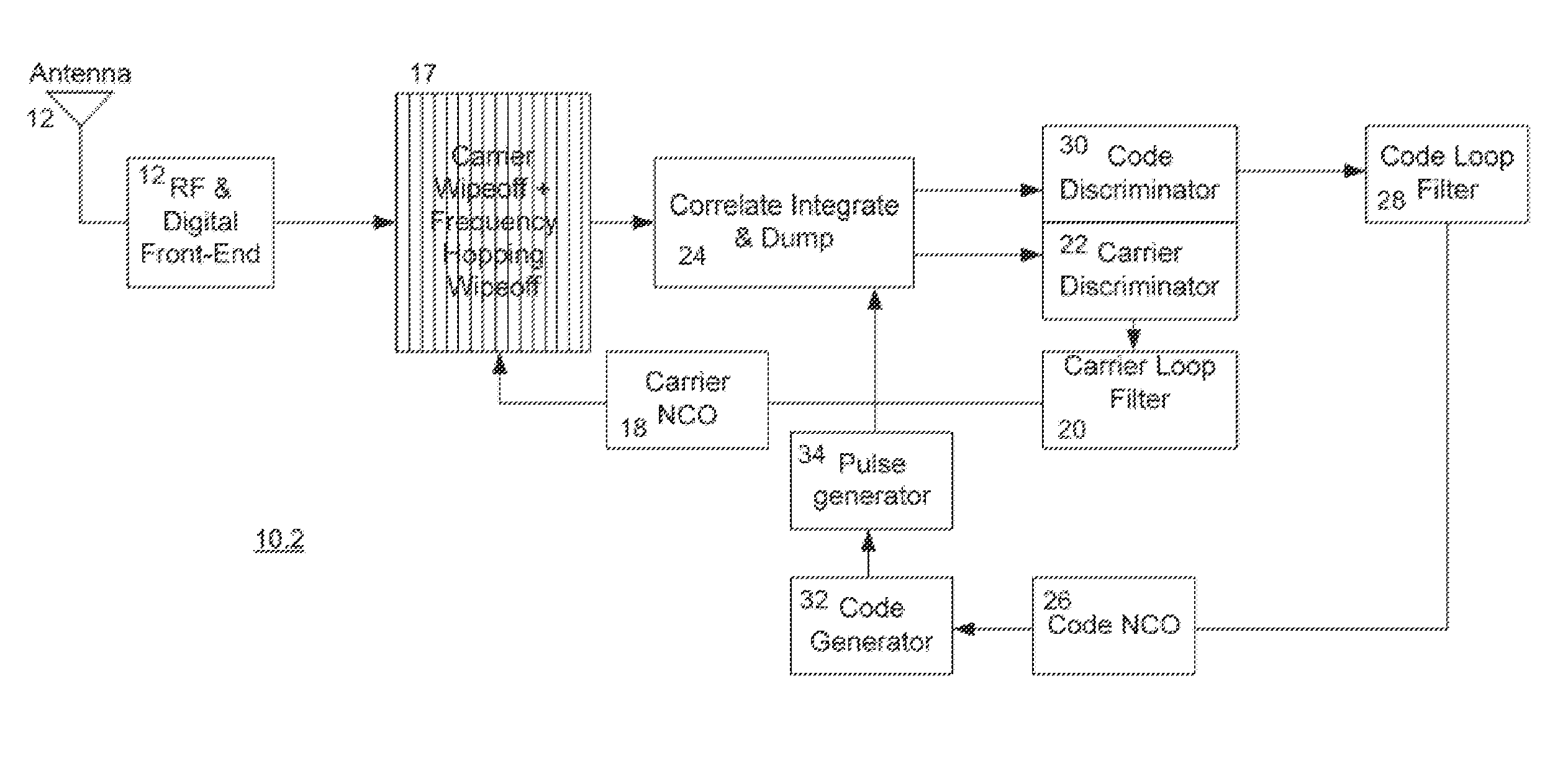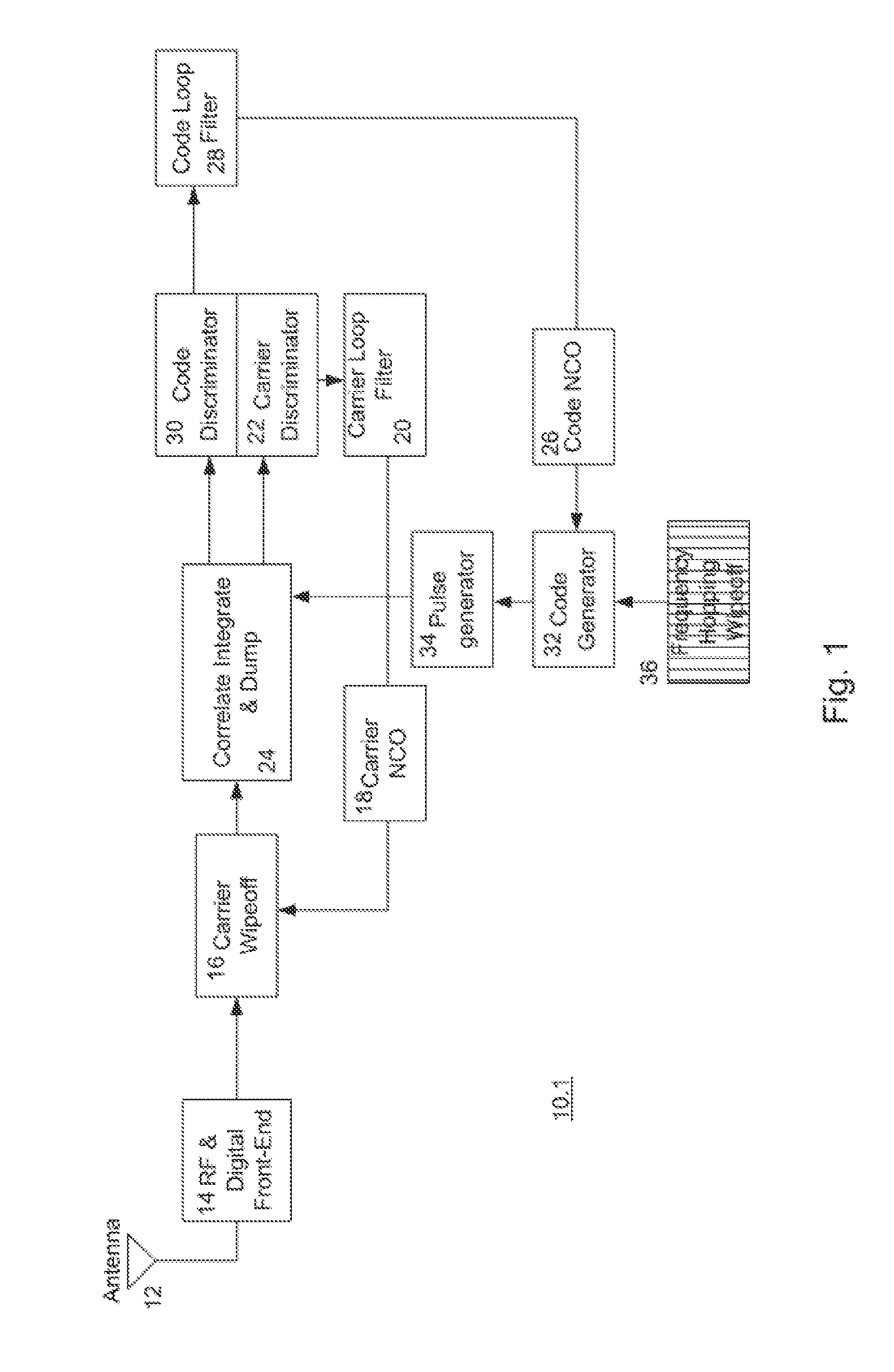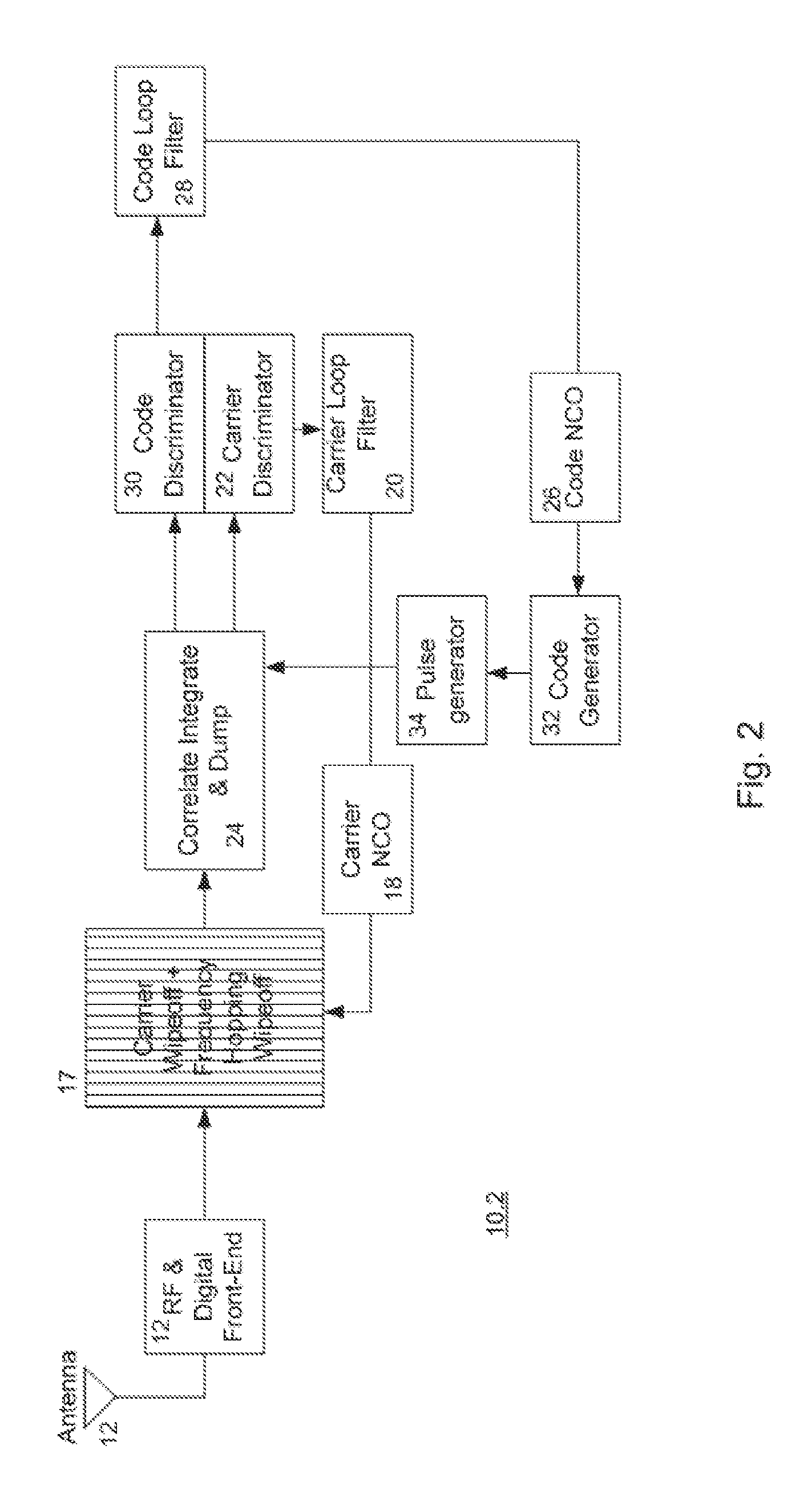Receiver for acquiring and tracking spread spectrum navigation signals with changing subcarriers
a technology of subcarriers and receivers, applied in satellite radio beaconing, measurement devices, instruments, etc., can solve the problems of limiting the maximum possible predetection integration time that can be chosen, the signal to noise ratio is reduced, and the predetection integration time is longer. , the effect of improving the signal to noise ratio
- Summary
- Abstract
- Description
- Claims
- Application Information
AI Technical Summary
Benefits of technology
Problems solved by technology
Method used
Image
Examples
Embodiment Construction
[0025]In the following, functionally similar or identical elements may have the same reference numerals. Absolute values are shown below by way of example only and should not be construed as limiting the invention.
[0026]FIGS. 1 to 4 show different architectures of a GNSS receiver for receiving and digitally processing FH CDMA navigation signals as example of spread spectrum navigation signals with changing subcarriers transmitted by GNSS satellites according to the invention. A GNSS satellite generates a navigation signal by spreading the spectrum of a signal with navigation data with a pseudorandom noise code in order to generate a CDMA signal and, then, by modulating the generated CDMA signal on a high frequency carrier signal, which changes between several subcarriers according to a hopping frequency, which means that the carrier signal changes its subcarrier with the hopping frequency according to a predetermined hopping scheme.
[0027]The GNSS receivers 10.1-10.4 each comprise an...
PUM
 Login to View More
Login to View More Abstract
Description
Claims
Application Information
 Login to View More
Login to View More - R&D
- Intellectual Property
- Life Sciences
- Materials
- Tech Scout
- Unparalleled Data Quality
- Higher Quality Content
- 60% Fewer Hallucinations
Browse by: Latest US Patents, China's latest patents, Technical Efficacy Thesaurus, Application Domain, Technology Topic, Popular Technical Reports.
© 2025 PatSnap. All rights reserved.Legal|Privacy policy|Modern Slavery Act Transparency Statement|Sitemap|About US| Contact US: help@patsnap.com



